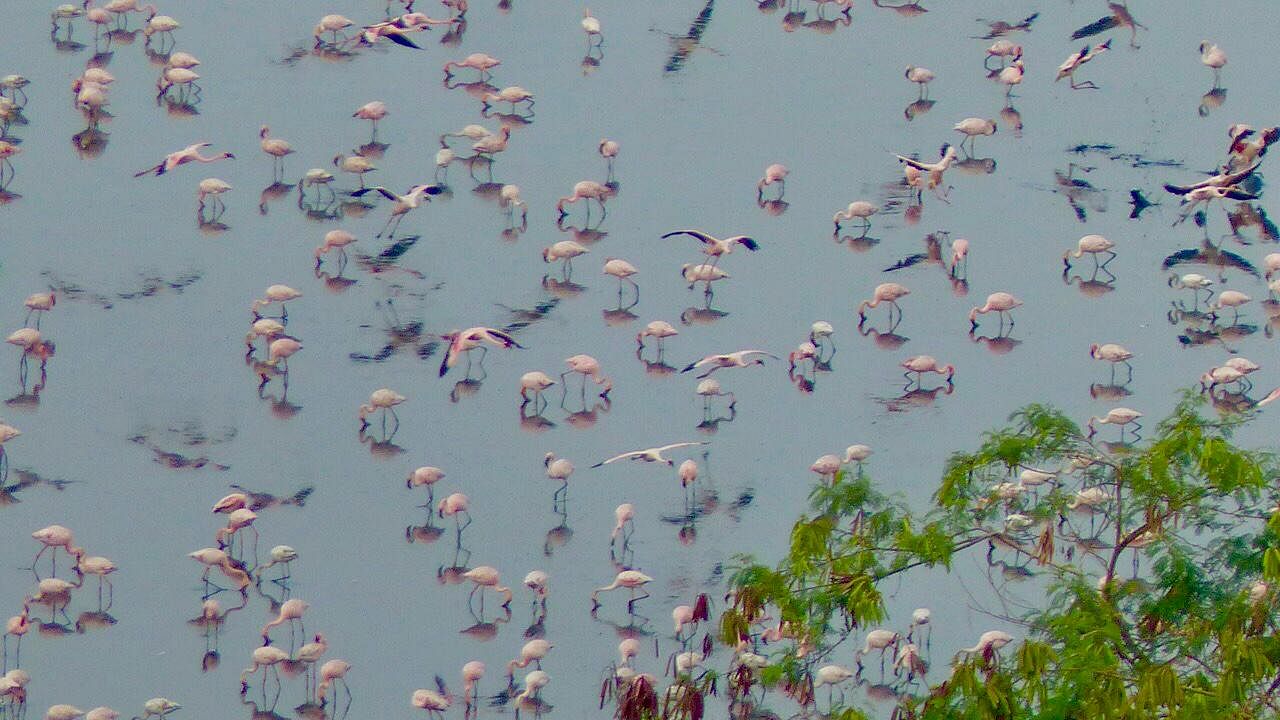
As human activities are at a minimum, the number of majestic flamingoes in Mumbai have increased manifold.
Forest department officials, NGOs, environmentalists over the past fortnight have seen big flocks of flamingoes in the Mumbai metropolitan region (MMR).
Bombay Natural History Society (BNHS) Director Dr Deepak Apte said that this year the numbers were mo more.
"Last year, in studies conducted simultaneously in various parts of MMR, we reported around 1.20 lakh. This year, from the images that we have, we estimate around 1.5 lakh flamingoes," said Dr Apte.
Also Read: Coronavirus India update: State-wise total number of confirmed cases
Conservationists said it was a delight to see the Thane Creek Flamingo Sanctuary.
The Talawe wetland near Seawoods NRI complex in Navi Mumbai, which local planner CIDCO sought to bury for a golf course, has begun to witness an increased number of flamingo bird flights, thanks to the lockdown.
The wetland visited by bird-lovers with their photography equipment, is a silent zone now thanks to the ban on movement of people and vehicles, said bird watcher Shruti Agrawal, who lives at Seawoods. “Now from our balconies, we get a beautiful view and we are able to keep a track of the birds landing and taking off,” she said.
“We can say at least 15,000 to 20,000 birds are flocking the wetland this season,” said Shruti’s husband Sunil.
The couple are fighting a legal battle to save the wetland and have it declared as a flamingo sanctuary.
“It is a paradise for bird watchers,” said another enthusiast Sandeep Bangia who has been regularly capturing the flamingo flights on his DSLR camera.
The destruction of wetlands in Uran by Navi Mumbai SEZ and JNPT SEZ has also disrupted bird flights and the flamingoes appear to flock Talawe in increased numbers, said B N Kumar, Director, NatConnect Foundation, who has been running a campaign to save Uran wetlands.
Environmentalists say the construction on Mumbai Trans Harbour Link (MTHL) at Sewree, another flamingo site, is also responsible for the birds finding the Talawe alternative. MTHL is planned to connect Mumbai with Uran via the Arabian Sea route.
Flamingoes were first spotted in Mumbai in 1994. The two types of birds of this species: Greater flamingoes (Phoenicopterus roseus) and Lesser flamingoes (Phoenicopterus minor) are seen here prompting BNHS-India and other agencies to protect the environment and help promote wildlife tourism in the megapolis.
They start arriving in October, nesting in mud-flats and leave before the onset of monsoon.
Most of these birds, which are found here, arrive from the Great Rann of Kutch in neighbouring Gujarat.
Some paleontologists and ornithologists believe that they are the birds, which is a link between the family of birds comprising storks, herons, ibises, spoonbills and cranes and the group that comprises ducks, swans and geese.